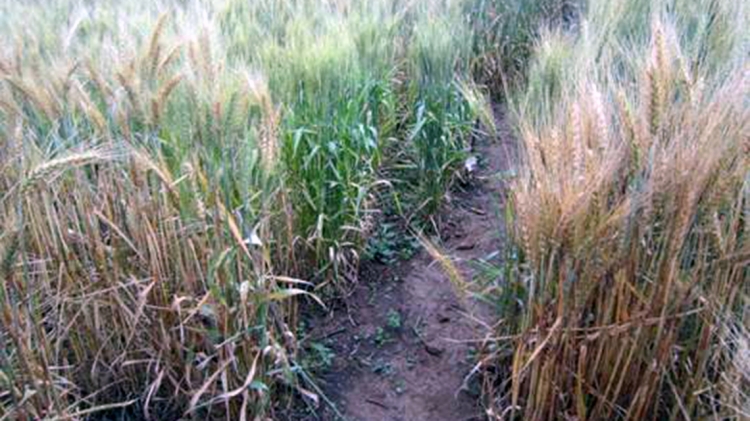A new race of the virulent cereal black stem rust disease, or Ug99, is spreading rapidly across Africa and South Asia and poses a major threat to global wheat and barley yields. The disease, caused by a parasitic fungus and first spotted in Uganda in 1999, is a mutated strain of an old crop disease. It has overcome existing defences in cultivated wheat varieties and is leading to devastating crop losses. Ug99 was identified in Kenya in 2001, in Ethiopia in 2003, in Yemen in 2007, and by 2008 it had spread to Iran.
The IAEA has joined the global effort to fight the epidemic spread of stem rust through an interregional technical cooperation (TC) project. The project uses induced crop mutation to help accelerate research on new wheat varieties resistant to the aggressive fungus.
Over the past four years, the project has supported the breeding of resistant wheat lines using induced mutation techniques to produce varieties that are able to fight off Ug99 while preserving good agronomic traits. Thirteen advanced lines and variety candidates of stem rust resilient wheat have already been identified. Two of the mutant lines have been successfully validated by the independent national authority in Kenya, and have received formal recognition as wheat varieties.
On 18-22 March 2013, representatives of 18 countries participating in the TC project gathered for a coordination meeting in Vienna to discuss some of the successful outcomes of the project, including the faster-than-expected development of Ug99 resistant wheat varieties. Most of the participating countries are either affected or threatened by the spread of Ug99 and are natural hotspots for the disease. At the project coordination meeting, Miriam Kinyua, the lead scientist at the testing site in Kenya, presented the work done leading to the positive results and provided a description of all the resistance lines, which were sent to the testing site by different Member States for stem rust resistance screening at the Ug99 hotspot, or brought along by scientists participating in the trial. She also presented the first two stem rust resistant wheat varieties and described the mutation induction breeding process that was used.
All advanced lines produced under the project will be delivered to other participating countries for submission to respective National Performance Trials. The seed of selected varieties will be multiplied and later disseminated to farmers. A ceremony is scheduled to take place in August 2013 in Kenya, during which seeds of rust resistant varieties of wheat will be distributed to farmers for planting.



